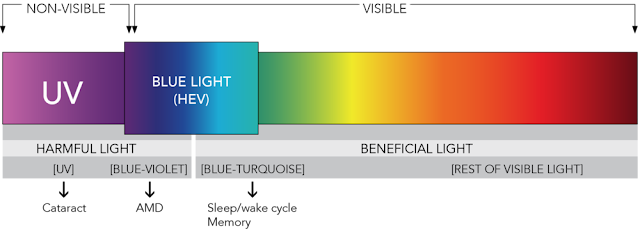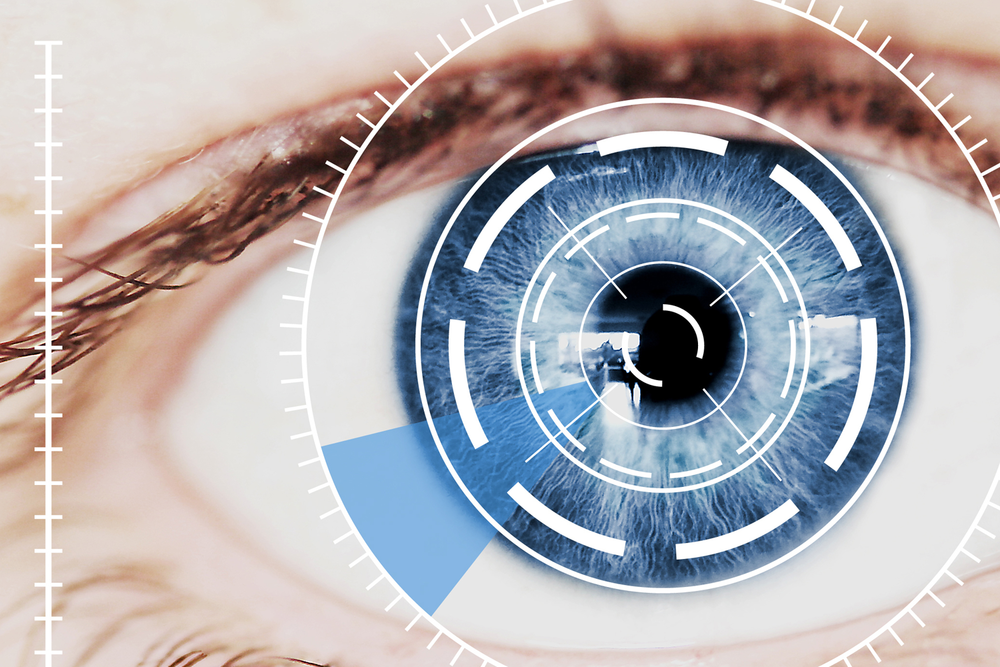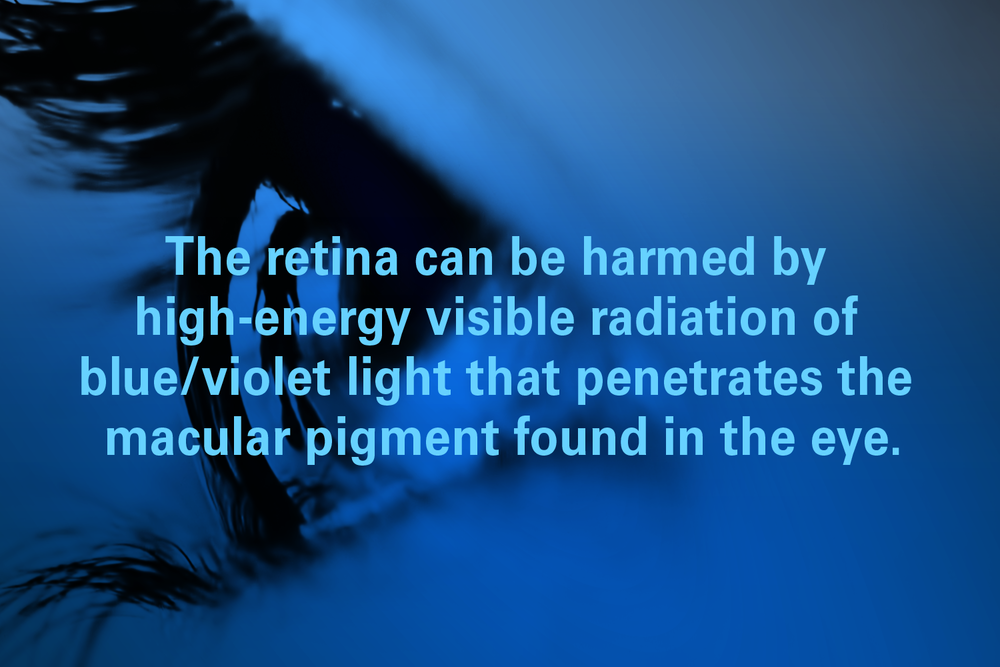We
all know how important it is to protect our eyes from the sun's harmful UV
rays; but what about the harmful effects of blue light rays?
Most of us spend the
majority of our waking hours staring at a digital screen. Studies suggest that
60% of people spend more than 6 hours a day in front of a digital device.
Where is Blue Light?
 Blue light is actually everywhere. When outside, light from
the sun travels through the atmosphere. Sources
of blue light include the sun, digital screens (TVs, computers, laptops, smart
phones and tablets), electronic devices, and fluorescent and LED lighting.
Blue light is actually everywhere. When outside, light from
the sun travels through the atmosphere. Sources
of blue light include the sun, digital screens (TVs, computers, laptops, smart
phones and tablets), electronic devices, and fluorescent and LED lighting.
Why should we be concerned about blue light exposure?
Blue light waves are
the among the shortest, highest energy wavelengths in the visible light
spectrum. Because they are shorter, these "Blue" or High Energy
Visible (HEV) wavelengths flicker more easily than longer, weaker wavelengths.
This kind of flickering creates a glare that can reduce visual contrast and
affect sharpness and clarity.
This flickering and
glaring may be one of the reasons for eyestrain, headaches, physical and mental
fatigue caused by many hours sitting in front of a computer screen or other
electronic device.
Our eyes' natural
filters do not provide sufficient protection against blue light rays from
the sun, let alone the blue light emanating from these devices or from blue
light emitted from fluorescent-light tubes. Prolonged exposure to blue light
may cause retinal damage and contribute to age-related macular degeneration,
which can lead to loss of vision.
Blue Light & Macular Degeneration
There's growing medical evidence that blue light exposure may cause permanent eye damage; contribute to the destruction of the cells in the center of the retina; and play a role in causing age-related macular degeneration, which can lead to vision loss.
Melanin is the substance in the skin, hair, and eyes that absorbs harmful UV and blue light rays. It's the body's natural sunscreen protection. Higher amounts of melanin afford greater protection, but as we age we lose melanin, so that by age 65 half of the protection is gone making us more susceptible to eye disease such as macular degeneration.
The retina is a very thin, multi-layered tissue covering the inner eyeball. The retina can be harmed by high-energy visible radiation of blue/violet light that penetrates the macular pigment found in the eye. A low macular pigment density may represent a risk factor for age-related macular degeneration by permitting greater blue light damage to the retina.
A Harvard medical study states that "High Energy Visible (HEV) blue light has been identified for years as the most dangerous light for the retina. After chronic exposure, one can expect to see long range growth in the number of macular degenerations, glaucomas, and retinal degenerative diseases". And a paper published by the American Macular Degeneration Foundation (AMDF) reports that "the blue rays of the spectrum seem to accelerate age-related macular degeneration (AMD) more than any other rays in the spectrum".






Comments
Post a Comment